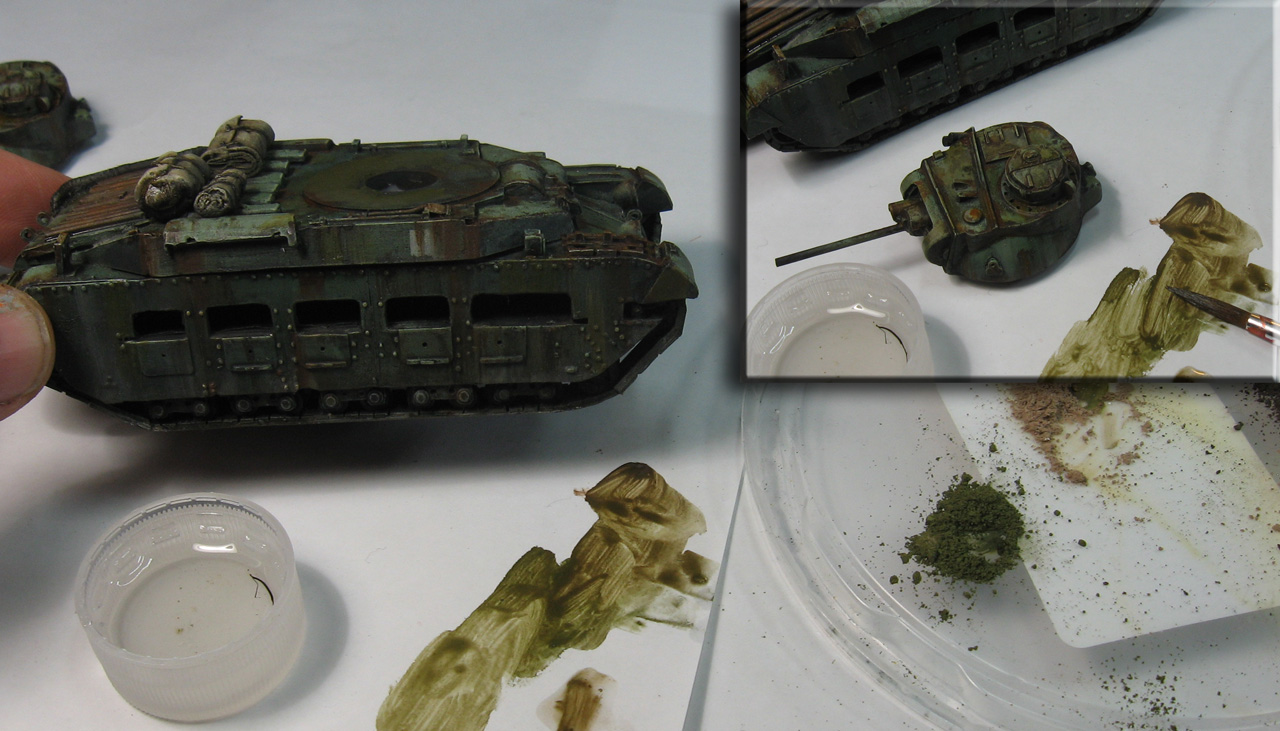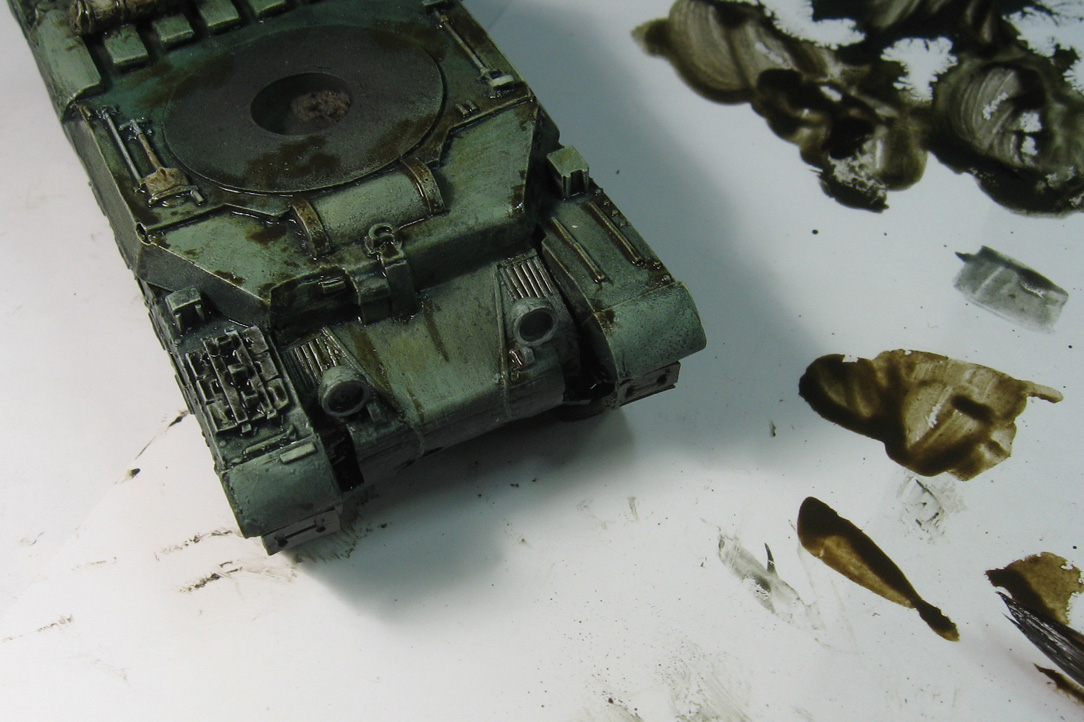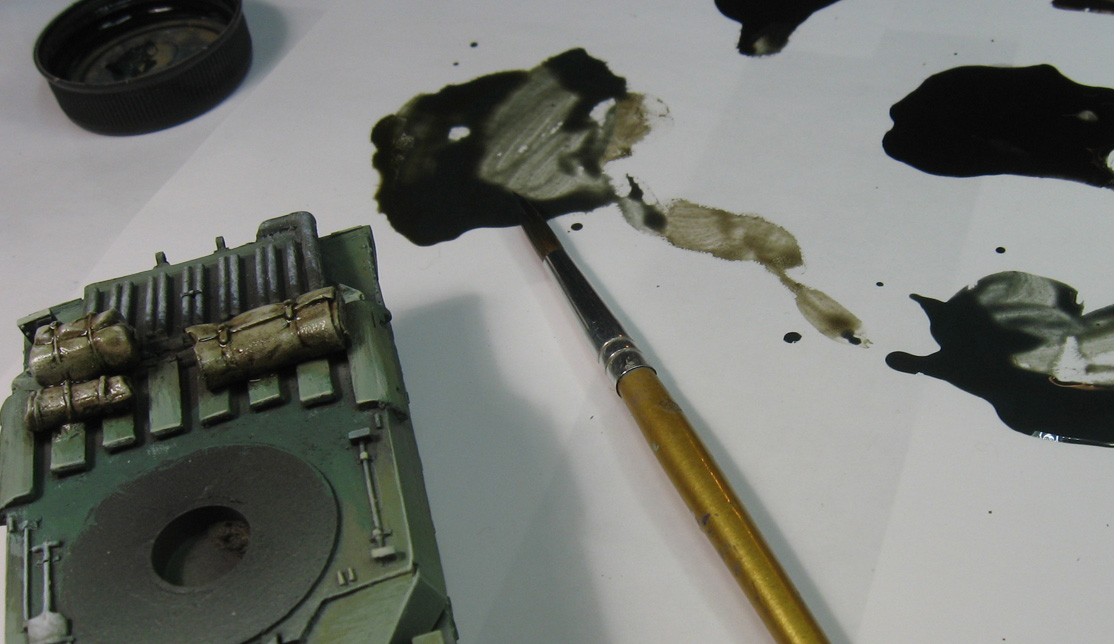While I have done some testing on the AMMO mud products (heavy mud, spatter, etc.) on both vehicles and infantry figures, I have not done an all out experimentation session with all of the oil based painting products.
These encompass three key materials. Filters, standard washes and panel line washes. I had a decent selection of each of these to try out. As you know, I used to do watercolor, pastel and even oil painting. I would have to call upon some long ago experience and memories when it came to oils!
I had a number of vehicles which had been worked right up to the point where these new products would be tested... essentially the shaded basecoat for vehicles!
You can see that the Opel Blitz, Bren carrier and truck have been the original test subjects. I was not trying to get any kind of specific result or look, it was all about pressing buttons to see what might happen!
I learned a lot about the filters and the panel line washes. One vehicle was left in the original Shaded Basecoat, and that was the Matilda II.
Have played a number of how to videos, and reading articles in the excellent Ammo Weathering Magazine publications, I could see that the products I have discussed tend to be used separately, and in a specific order.
Normally, the filters are applied first, with some panel line washes and then the 'regular' washes.
This standard approach is a little more 'mechanical' than what I will be doing. I do have a typical set of brushes though... and they will be used to apply the paints and then remove them.
As these posts move forward, you will see how the broader, flatter brushes to the right will be utilized to wipe away excess wash liquid and even blend washes long after the original applications.
I had a few different 'colors' set out on the palette. As I normally do, I have a blue, a red and a yellow. In this case, the blue was a dark blue/grey panel wash, and then other washes that were brownish yellow, and so on.
Mixing these two materials together would create that dark green which I wanted to shade the vehicle darker.
Usually, the panel washes are meant to be 'touched' to the surface, and allow the capillary action to let the paint to spread through crevices on the vehicle. However, I added some of the regular washes, which would give this a little more body, and less of the capillary effect.
Still, unlike water based products, these washes will sink deep down into recessed areas. In addition, water marks are a thing of the past! I don't have to fret over the precise spacing of the pigments here, because I will be going back over this and removing as much or as little of the wash as I want!
This is a huge advantage. In this picture, you can see that I have applied some brown/tan mix to the stowage items. This wash will stay wet for quite a while, giving me that opportunity to go back in an wipe away the excess.
I also do this with my water based glazes, but this must be done immediately, and I have to be more careful to avoid those water marks.
A much deeper, darker wash is mixed for the rest of the hull. I am mixing some of the yellowish wash with the sea blue panel wash to create a green. There are a large number of colors to choose from in the AMMO line, but I have to use what's on hand.
I applied this wash color to several horizontal surfaces, but not all of them... just a few selected panels.
I took one of the broader, flatter brushes and began to wipe away some of that wash to reveal the lighter colors underneath. A 'scumbling' movement was used, which essentially scrubbed the wash away.
Again, since this is an oil based product, this kind of removal of pigment won't create water marks.
I continued this process of washing and removing on various panels. It's important to leave yourself an area to hang onto, because it will take a while for areas to dry.
I mixed an even larger variety of panel washes with the standard washes to make sure I had a variety colors. The filters are commonly used to tint the colors, but they are applied in a different way. These must be placed more evenly on the vehicle, and not allowed to collect or pool in recess areas. They are designed to gently 'nudge' a light color to a different hue.
I used these to thin down some of my heavy glazes, as a filter is a paint with more of the thinner mixed in. I forget what the exact percentage is, but it is nearly 70% thinner on the filters.
Take a look at the back panel in this picture, with the dark wash applied. The next image will illustrate what that looks like once I have manipulated it with the dry brush.
Here it is after manipulation. I can also use regular flat brushes for this, or even Q-tips. For these first tests, I wanted to have as much control over the experiment as possible. I will definitely begin using the larger flat brushes for the process in the future.
The washing and removing process continues on the turret, but as you can see, there are a lot of surfaces here. Most of the original glazes were variations of panel line washes, since this is exactly the kind of area they were intended for.
I have also been using the colors that I painted on the vehicle with regular acrylic paints as my base. All I am doing here is creating more shading, and altering the tints of certain areas.
If I use the blue/black panel wash or the green for camo wash, I will get different tints, but that capillary motion will be consistent through all of them. As I continued the experiment, I began to realize how powerful this motion would be!
In Part Two, you will see how the sides of the hull were rendered, and the mixing of even more materials together for attaining the desired effects.
This is all very new, so each post it going to show lots of changes, additions, etc., to these techniques. It will be a very fun journey of discovery, which always helps to keep things fresh and new! Working with a product that does not fully dry for hours will allow me to work on far more things at once.
Eventually I will be doing this kind of technique on 'regular' infantry style figures, so stay tuned!!






























































